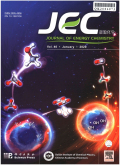- 钛学术文献服务平台 \
- 学术期刊 \
- 工业技术期刊 \
- 石油与天然气工业期刊 \
- 能源化学期刊 \
Atom-level interfacial synergy of single-atom site catalysts for electrocatalysis
Atom-level interfacial synergy of single-atom site catalysts for electrocatalysis
基本信息来源于合作网站,原文需代理用户跳转至来源网站获取
摘要:
Single-atom site catalysts (SACs) have made great achievements due to their nearly 100% atomic utiliza-tion and uniform active sites.Regulating the surrounding environment of active sites,including electron structure and coordination environment via atom-level interface regulation,to design and construct an advanced SACs is of great significance for boosting electrocatalytic reactions.In this review,we system-ically summarized the fundamental understandings and intrinsic mechanisms of SACs for electrocatalytic applications based on the interface site regulations.We elaborated the several different regulation strate-gies of SACs to demonstrate their ascendancy in electrocatalytic applications.Firstly,the interfacial elec-tronic interaction was presented to reveal the electron transfer behavior of active sites.Secondly,the different coordination structures of metal active center coordinated with two or three non-metal ele-ments were also summarized.In addition,other atom-level interfaces of SACs,including metal atom-atom interface,metal atom-X-atom interface (X:non-metal element),metal atom-particle interface,were highlighted and the corresponding promoting effect towards electrocatalysis was disclosed.Finally,we outlooked the limitations,perspectives and challenges of SACs based on atomic interface regulation.

推荐文章
基于 Atom510的校车安全监控管理系统设计
校车
安全监控
嵌入式
物联网
Atom510
基于凌动处理器ATOM-510的车载信息终端设计
Intel Atom
嵌入式系统
GPS
GPRS
车载信息终端
ATOM P-600输液泵常见故障及检修
输液泵
超声传感器
医疗设备维修
内容分析
关键词云
关键词热度
相关文献总数
(/次)
(/年)
引文网络
引文网络
二级参考文献 (0)
共引文献 (0)
参考文献 (0)
节点文献
引证文献 (0)
同被引文献 (0)
二级引证文献 (0)
2022(0)
- 参考文献(0)
- 二级参考文献(0)
- 引证文献(0)
- 二级引证文献(0)
引文网络交叉学科
相关学者/机构
期刊影响力
能源化学
主办单位:
中国科学院大连化学物理研究所
中国科学院成都有机化学研究所
出版周期:
双月刊
ISSN:
2095-4956
CN:
10-1287/O6
开本:
出版地:
大连市中山路457号
邮发代号:
创刊时间:
语种:
eng
出版文献量(篇)
2804
总下载数(次)
0
总被引数(次)
7996
期刊文献
相关文献
推荐文献
- 期刊分类
- 期刊(年)
- 期刊(期)
- 期刊推荐
一般工业技术
交通运输
军事科技
冶金工业
动力工程
化学工业
原子能技术
大学学报
建筑科学
无线电电子学与电信技术
机械与仪表工业
水利工程
环境科学与安全科学
电工技术
石油与天然气工业
矿业工程
自动化技术与计算机技术
航空航天
轻工业与手工业
金属学与金属工艺
能源化学2022
能源化学2021
能源化学2020
能源化学2019
能源化学2018
能源化学2017
能源化学2016
能源化学2015
能源化学2014
能源化学2013
能源化学2012
能源化学2011
能源化学2010
能源化学2009
能源化学2008
能源化学2007
能源化学2006
能源化学2005
能源化学2004
能源化学2003
能源化学2002
能源化学2001

 免费查重
免费查重










